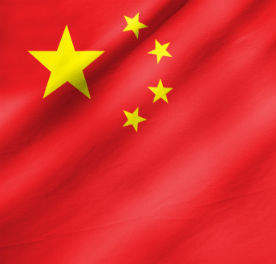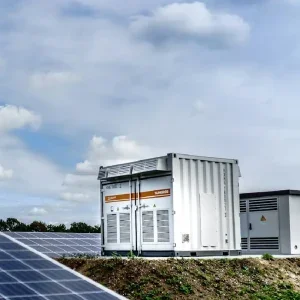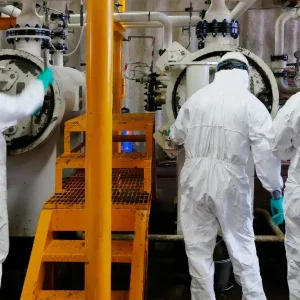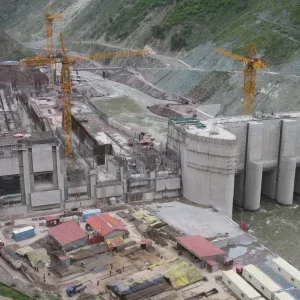

A sea change in Chinese energy policy is expected this year as a result of a key political meeting staged in Beijing last November – at the third plenary session of the 18th Chinese Communist Party central committee. The meeting – which took place after February 2013’s accession of a new leadership – resulted in a wide-ranging commitment to deeper reforms, allowing the market a greater influence in price-setting and capital allocation.
For the energy sector, a subsequent plenary resolution under President Xi Jinping further indicated that the new administration is committed to accelerating reform, but also acknowledged that it will be a long and arduous task.
Modern market
The text of the resolution called for the establishment of a ‘modern market system’ in the energy sector, under which the market plays a ‘decisive’ role in the allocation of resources. It also called for a corresponding reform of the state-owned enterprises (SOEs) that retain monopolistic control of key sectors, including electricity and natural gas, but stopped short of offering much detail.
"The document recognises that there are parts of the economy where natural monopolies exist and that state participation remains crucial in those sectors," Brian Jackson, an economist with analysts IHS China wrote in a briefing.
"However, it calls for setting clear boundaries for SOEs in these sectors and separating the monopolistic functions from functions that can be opened up for competition. Natural-resource sectors are singled out because many segments in these areas are natural monopolies, such as natural gas pipelines and electric power transmission," he said.
Yet, reform of these sectors is an ongoing process that has stalled in the past due to opposition from powerful vested interests, and offshore oil and gas has so far been the only sector where foreign companies have been allowed significant access.
Influence of oil
In 2013, the China National Offshore Oil Corp (CNOOC) opened some 25 blocks for co-operation with foreign firms, building on a framework that has been in place for some three decades.
Otherwise, foreign participation has been limited, owing to hazy investment criteria and pricing regimes, as well as trenchant opposition from state owned enterprises.
However, private domestic firms are already being allowed limited opportunities to develop oil and gas infrastructure, and this process gives an indication of where the wider access promised in the plenary resolution will likely follow, according to Dr Neil Wang, China managing director at global consultancy Frost & Sullivan.
Mr Wang noted the approval granted in 2013 to the ENN Group, one of China’s largest private companies, to build the first private liquefied natural gas (LNG) receiving station in Zhejiang province, south of Shanghai. Building off its experience in Zhejiang, ENN in March this year announced ambitious joint venture plans to build 50 natural gas fuelling stations for trucks on US highways.
Mr Wang also highlighted the licences granted by the ministry of commerce for Tyloo Energy, Zhongli Chemical and a raft of similar companies to store and deliver crude oil. Moreover, the Guangdong-Zhejiang natural gas pipeline – currently under construction – is open to private investment and social capital, while privately held Guanghui Energy Co Ltd has approval to develop a similar cross-border pipeline in the Xinjiang Uyghur Autonomous Region, in north-west China.
“CNPC has also opened shale gas extraction to private enterprise, which shows that the share of private capital is gradually increasing in the investment of oil and gas, excluding primary upstream resources," Mr Wang said.
So it is a case of softly-softly in terms of oil and gas infrastructure, and the same could also be said of the wider power sector, where a weak regulatory framework has allowed powerful vested interests to delay opening of the sector.
Transmission issues in China
Beijing is well aware of the issues, and in March 2013 ordered the National Energy Administration (NEA) to absorb the State Electricity Regulatory Commission (SERC) as a means of hurrying along reform.
The bulked up body in January released a notice on market regulation that establishes the agenda for energy sector restructuring, accelerated decentralisation and the implementation of the plenary reforms. Specifically, the document called for end-users of electricity to deal directly with power generation companies to determine tariffs, as well as ‘fair and open access to the power grid … and oil and gas pipeline facilities.’ The notice also announced a probe across 10 provinces investigating the costs of power transmission and distribution to the State Grid Corp, and its subsidiaries, as well as the relative merits of AC and DC power transmission.
The transmission and distribution probe could be the key that unlocks market access, but perhaps unsurprisingly it faces significant opposition from the State Grid Corp.
"Now SERC has merged with the NEA, the NEA has the regulatory function and they have to understand the transmission and distribution costs," said Fuqiang Yang, senior advisor on climate and energy at the Natural Resources Defence Council (NRDC) in Beijing. "SERC did not finish the job because they were not powerful enough, so now the NEA would like to finish the task of understanding how much the State Grid is overcharging."
Mr Yang contended that there remains considerable doubt as to how the energy regulator should go about breaking up the State Grid’s near monopoly (rival Southern Grid Corp accounts for one-fifth of the grid system), particularly regarding whether to implement a vertical model whereby power producers expand into transmission and distribution, as well as how to allocate retail and wholesale prices.
"People are still arguing over the model, but the first step is to understand the cost," he said. Mr Yang also noted that while the China Petrochemical Corporation’s (Sinopec) president, Li Chunguang is keen to try new mixed-ownership models in the pipeline sector, the same cannot be said for the State Grid’s attitude towards opening up the power grid.
Power sector reform
The break-up of the grid monopoly is the most difficult challenge facing power sector reform, and it is partly for this reason that Mr Wang suggested that reform will remain focused on power generation, and is unlikely to extend to opening investment in and construction of the power grid.
"It’s possible that the final scheme of power industry reform will involve a power generation and sales segment, including introducing private capital to invest in the power generation segment and the promotion of trial trading between industry user and power plant," he said.
By way of example, Mr Wang pointed to an ongoing trial in Weiqiao, Shandong province, (between Shanghai and Beijing), which has allowed independent power company Weiqiao Pioneering Group to produce electricity at the rate of over 3GW for local industry without connecting to the State Grid. "Operating without connecting to State Grid has fostered very low energy costs, and as a result, the local textile and electrolytic aluminium industry is highly profitable," Mr Wang said. He added that such an arrangement is a perfect example of what Beijing is trying to achieve via its power sector reform.
“I think in future wind and hydro will open to private capital because they need a huge amount of investment," added Mr Yang, noting that reform has a way to go before investors would feel comfortable committing capital as the pricing landscape is in such flux. Indeed, the National Development and Reform Commission (NDRC) in late January announced it would reform the price that power-grid operators pay to hydropower plants to encourage investment in the industry, and help China meet its sustainable energy targets, indicating the reform could result in higher prices being paid to hydro plants.
There have been rumours of similar reform in the wind and natural gas sectors, where the price discussion has been further complicated by the shifting nature of China’s energy priorities, according to Mr Yang.
"Now for the power sector, the primary concern is the environment, and then coverage, followed by price. Another is to provide high quality service," he said.
Carbon trading
That focus on the environment is a relatively recent concern, and has led to confusion over policy discussions and research previously concentrated on bringing down prices. Meanwhile, that focus on reducing emissions has accelerated the opening of carbon trading exchanges in Beijing, Shanghai and Shenzhen. While many caution that it is too early to say if the carbon trading regime will provide a market mechanism for industry to adopt cleaner energy and power systems, the initial evidence is encouraging.
"Since the start of trading in Shenzhen, 635 industrial enterprises and 197 large public bodies are engaged in carbon emissions trading," Mr Wang said. "At present, the quota price of carbon emission per tonne in Shenzhen has risen from 28 yuan (aka Chinese Yuan Renminbi, USD4.50) to about 80 yuan (USD12.89), and the trading value has reached a total 8 million yuan (USD1.3 million), indicating it can help enforce energy conservation and carbon emission reduction."
In mid-March, the commission announced that all companies that emitted more than 13 000 tonnes of carbon dioxide equivalent in 2010 must report their emissions of all six major greenhouse gases, which will only encourage further trading and the installation of cleaner, more efficient industrial power systems, as well as monitoring equipment.
So while the preponderance of unknowns in China’s energy sector reform indicates opening up the sector will be slow, progress is being made across a range of fronts.
"Now is the first stage to gather information and resolve the uncertainty," concluded Mr Yang. "Sooner or later all these areas will be opened."
Author notes
This article by David Green was published in the May 2014 issue of ModernPowerSystems






